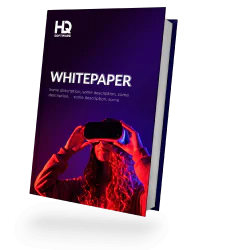What Are Virtual Reality Solutions?
Real-life Implementation of VR Solutions
What are Augmented Reality Solutions?
Real-life Implementation of AR Solutions
What are Mixed Reality Solutions?
Anyone plunging into the virtual universe learns quickly that it incorporates a variety of technologies, devices, content types, special equipment and so on. Once you decide to implement Augmented or Virtual Reality for your business, it all becomes even more complicated. Discover the key benefits of implementing AR/VR app development services.
What Are Virtual Reality Solutions?
Real-life Implementation of VR Solutions
What are Augmented Reality Solutions?
Real-life Implementation of AR Solutions
What are Mixed Reality Solutions?
Which Reality suits you best? It’s easy to get confused.
In this article we will sort everything out:
Read further and let us explain!
Most commonly, Virtual Reality is defined as a three-dimensional simulation or a linear video environment generated by a computer. It is often created to feel realistic but sometimes is easily distinguishable from real life.
As VR has evolved and is now being used for various purposes, several different definitions have arisen. The fundamental parameters of VR are:
Thanks to the effect created by VR headsets, even unrealistic environments are still immersive and convincing. There’s the story of a man who spent 24 hours playing Minecraft VR, which is far from realistic-looking. But his brain adapted to that reality.
This is what Minecraft VR looks like.
VR-helmets show images for the right and left eyes at different angles so that users see a picture with dimension. The sensors on the helmet track the user’s head position and move the virtual environment accordingly.
Want to create an AR/VR solution for your business? We’re ready to help!HQSoftware has a team of skilled professionals ready to tackle the project. Let’s talk!
Anna Halias
Business Development Manager
Virtual Reality solutions are already interactive simply when responding to head movement. But with the help of special controllers, the user can transfer his hands’ movements to the Virtual Reality solution and virtually move objects and so forth.
Related technologies for Virtual Reality include the following:
VR Headsets. These are head-mounted devices that place a display before users’ eyes so that they can consume VR content with no distraction. There are:
HTC Vive headset.
Google Daydream.
What comes to mind first? Gaming, of course, and for a reason — VR has created a huge set of opportunities for the gaming industry, and people love the idea of immersive, interactive worlds. Yet prolonged usage of a helmet can cause problems: dizziness, nausea, and more.
But there are industries besides gaming that benefit from VR:
VR learning content provides students with a more immersive way to memorize things — through interacting with them. Companies can train their staff, universities can educate their students — the possibilities are quite impressive.
For example, VR Education Holdings offers a corporate program for social education.
Unimersiv offers Anatomy VR for medicine students — a fully interactive experience with a virtual human body.
Virtual Reality has shown success in treating depression and PTSD, according to the Journal of Anxiety Disorders.
Military personnel assigned to a form of trauma management therapy that used VR recovered faster and better than others. They received exposure therapy — the traumatic moment that caused PTSD was recreated in VR.
The former soldiers had to experience the traumatic event in virtual surroundings, under the guidance of a therapist. After a while, PTSD symptoms were significantly reduced. This type of treatment can also be used to improve sleep and social interactions that PTSD interfered with.
There are lots of examples of VR in marketing, as it is a powerful tool to give consumers an unforgettable experience. They can either interact with the product they are willing to buy or get an entertaining experience that will be remembered.
Ikea has created a virtual representation of a kitchen. The users can wear a helmet and then explore the kitchen and interact with the objects there.
An Ikea VR game.
If you are still confused about all these Realities, let’s move on. Augmented Reality solution is just an overlay of digital content on the real-world image. Imagine looking at a table through your smartphone camera, and your device overlays a virtual tablecloth on it. This is an extremely simple example of AR.
The overlay can consist of different types of data:
AR is considered to have huge potential to conquer the consumer market because of its simplicity and low technical and infrastructure requirements. AR content can be delivered with the help of hardware that most people already have — personal smartphones.
AR is brought to consumers with the help of the following devices.
Google Glass.
Despite the fact that AR, as well as VR, have become popular as gaming technologies, they can also be handy tools in various industries.
In manufacturing, it is important to make no mistakes during production. A minor error in any single stage can result in damage or malfunction in the final product.
AR allows the engineers to build prototypes of production processes to examine them better and prevent any mistakes. AR glasses can also be used to display an overlay related to what an engineer sees when he or she performs repairs or maintenance on the equipment. An overlay can display what to do exactly in various situations, show descriptions of the equipment parts, and more.
AR allows people to try on clothes, sneakers, nail design, and other items, even when not in a store. These applications track the movement of the hands and body to move the applied AR overlay accordingly. Just use a relevant AR application:
The list of applications goes on; just search the Android and iOS app stores for more examples.
When it comes to offline implementation, Zara is one of the best examples. Since 2018, Zara has installed its AR displays in more than 100 stores. The display allows customers to hold their mobile phones in front of a special sensor on a specific item and instantly buy the look.
How do modern businesses use AR to increase their revenues and outperform their industry competitors?

You have an example of AR for navigation right in your hands — Google Maps AR.
How does that work?
First, you need to pick a place on the map where you want to go. A general map will show you the directions drawn on the map. But with Google AR, you can point your phone camera on the environment around you and see an overlay of the directions that tell you which way to go.
To use this feature, open Google Maps, search for a destination, select walking as a type of moving, and tap “Start AR”. If you are looking the wrong way, you will see an arrow pointing where to go — turn around to find the right orientation.
Now that you know about Augmented Reality and Virtual Reality, it is time to finally meet Mixed Reality — the most immersive version, and one that’s well ahead of the curve.
Mixed Reality is sometimes called Hybrid Reality. In MR, the virtual content is not just overlaid on the real object that the user normally sees; the virtual objects can interact with the real world because they are “attached” to the environment.
Mixed Reality breaks the boundaries between real and computer-generated objects. Virtual objects can be visibly obscured by the real ones from the user’s point of view.
If it sounds confusing and still not clear, wait for the examples below.
Mixed Reality demands the delivery of top-notch tech. MR headsets are devices that allow MR to work properly:
Samsung HMD Odyssey.
The list of headsets goes on: there are more comfortable ones, more budget-friendly, more advanced, and so on. But there is a startup that everyone talks about: Magic Leap One.
Magic Leap One is backed by such giants as Google and Qualcomm. The device projects a light straight into the user’s retina instead of displaying something before his eyes on the lenses of the headset.
The developers say Magic Leap makes use of the retina and the brain and how they work instead of fighting biology and making you feel sick after wearing the glasses for too long.
Mixed Reality is pushing the usage of wearable devices, such as glasses and headsets, to a new level. With Magic Leap, users have the opportunity to wear the device all day.
Imagine waking up, putting your MR glasses on, and watching today’s agenda appearing on the wall, the weather report on the table, and an email notification moving around your coffee cup. With adjustable data to display, it is available for anyone.
Sound like a distant future? Magic Leap and Microsoft HoloLens claim to provide such features already.
VR and AR games are impressive and immersive enough for the majority of users. But with the advent of Mixed Reality games, they do not stand a chance.
Imagine shooting troops of enemies inside your own apartment, or watching whales jump out of the waves on the floor of your kitchen, or walking in a fully virtual environment of a tropical forest — MR can do anything and is considered the future of AR and VR together.
Mixed Reality whale, Magic Leap.
With Mixed Reality, co-workers can collaborate without being distracted from important tasks. All they need to do is put the headsets on, start the conversation, and do the work and participate in the conversation while seeing their collaborators.
Microsoft HoloLens has a special Mixed Reality version of Skype, which you can see in the picture below:
Two people using Skype for HoloLens.
The interface fits within the environment of the users and mixes with the real objects. The user can attach a window with a conversation to a wall, and their colleague can draw or write something on the touchscreen; the drawing will appear before the user somewhere near the Skype window.
This article earlier mentioned AR for manufacturing. Mixed Reality works in a similar way, but with distinctive differences.
It doesn’t just overlay the virtual data and graphic elements on the environment, it creates guides and directions for the engineers. These instructions are nearly indistinguishable from the real world. Look how Renault utilizes Mixed Reality to help its engineers perform quality control processes easier and with more confidence.
Renault engineer utilizes MR.
Before deciding what technology to apply in your business, it is important to learn all the peculiarities.
Now that you have learned the differences between Augmented Reality development, Virtual Reality development, and Mixed Reality technologies you can decide which suits your needs best.
Turn to Virtual Reality when you need to build a whole new visual experience that replaces the real world. VR is best for education in various industries and entertainment. Your users will need a special device ranging from a simple cardboard headset to an advanced kit with a functional headset, sensors, and controllers.
Use Augmented Reality solutions when it is important to augment the real world with additional visual pieces, animated objects, and sound. AR is best for helping in manufacturing, navigation solutions, and various marketing activities, for example, in the retail industry. The users of your AR solution will probably need only their smartphone.
Choose Mixed Reality technologies when you want to take a step towards a not so well-known future. Mixed Reality is best for experimental projects, immersive entertainment, and complex manufacturing support applications. To fully understand and appreciate the experience, users need to own a more expensive high-end device.

HQSoftware Founder
Having founded the company in 2001, uses his broad knowledge to drive the company forward. Ready to share his wisdom on software development and technology insights
We are open to seeing your business needs and determining the best solution. Complete this form, and receive a free personalized proposal from your dedicated manager.

Sergei Vardomatski
Founder